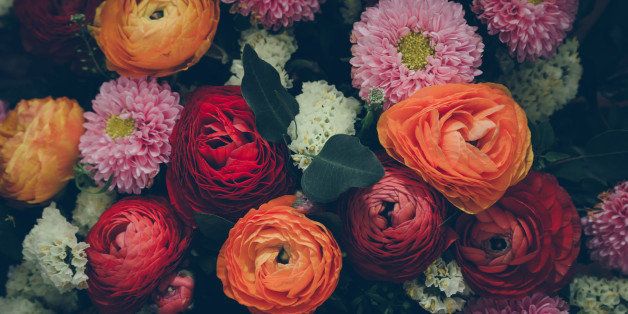
The Persian movie The Color of Paradise--known in Persian as Rang-e Khodā--is one of my favorite films of all time. The plot centers on a poor blind Persian boy name Muhammad who is neglected by his widowed father. Unable to properly take care of Muhammad, his father takes him to Aziz, Muhammad's grandmother. Aziz dearly loves Muhammad and despite her old age she takes care of him, bringing him along into the farm fields and introducing him to the beauty of nature.
In one particular scene, Aziz decides to create a rug in the Name of God. In the "olden" days, they did this by boiling water in a huge cauldron. They then put pure white wool into the boiling water. In order to dye the wool, they placed flowers into the cauldron and mixed the white wool with the flowers.
After some time, the color of the flowers dye the wool--yellow flowers create yellow fabric; purple flowers create purple fabric, etc. These fabrics are then woven into a rug. The film shows this process--Muhammad and Aziz working to create this rug in the Name of God.
The process of dyeing is perhaps the spiritual essence of Islam. The Holy Quran states, "Say: we take our color from Allah, and who is better than coloring than Allah? And it is He whom we worship" (2:138).
The process of dyeing is like an act of submission to faith where the white wool gives up its color to whatever flower is in the cauldron. And in a way, that white wool is us--frail human beings. Yet, the wool of our being is only ready to absorb God's Color when the inner fire of yearning boils our hearts, cleansing whatever impurities and ego exist. It is only then when we can be the color of whatever Flower the Divine Wind decides to place in our cauldron. And as we submit to the dye of the Flower, our ego and impurities are transformed and our being becomes imbued with the color of the Divine. Ultimately, this Color allows us to harmoniously reside in the Rug of this universe.
This act of dyeing, this act of submission is not proprietary to Islam. In fact, it is arguably the supreme spiritual essence of every major religious tradition. Taoism exhorts individuals to free themselves from the ego and to be one with Tao. Similarly, Zen Buddhism extols the human being that transcends the ego and reaches a state of Emptiness, which is known as śūnyatā.
Hindu spirituality encourages seekers to transcend the māyā--which is translated as the illusion of the ego and earthly life--and celebrates the individual who is liberated from this illusion as reaching moksha or self-realization. Moreover, the Old Testament encourages acts that surpass the ego by saying, "What does the Lord require of you? To act justly and to love mercy and to walk humbly with your God" (Micah 6:8).
Thus, various religious traditions seek to transform the ego and dye it with a Transcendent Reality. But what does this Coloring actually look like? I mean, it is easy to theoretically discuss the process of coloring as a metaphor for spirituality. But, what does it actually mean to us now in this moment? A hint of this answer lies in a specific interaction between Muhammad and Aziz.
When Muhammad is first dropped off at Aziz's house, he hides behind a tree, attempting to surprise Aziz of his arrival. Aziz sees him hiding, but pretends to not know he is there by calling him, saying, "Muhammad? Muhammad jan (dear)? My son, come here." One can feel the absolute pure love in Aziz's voice transcend her old age, her own worries, her own desires.
Aziz's calling of Muhammad is filled with such pure love. So much so that--in its most supreme spiritual essence--I feel as if Aziz's calling of her Muhammad is a symbol of God's calling of his beloved Prophet Muhammad where God is sweetly saying, "Muhammad? Muhammad jan (dear)? My son, come here."
And, in a way, God is calling--with pure love--the Muhammad in each of us to come towards His Embrace. The purity of this Love melts the heart--tears are the only response to this purity.
This purity of Love is perhaps the dye of God. For Pure Love is beyond all duality. In fact, It reveals the illusion of the self. For the mystics out there, It is all that Is.